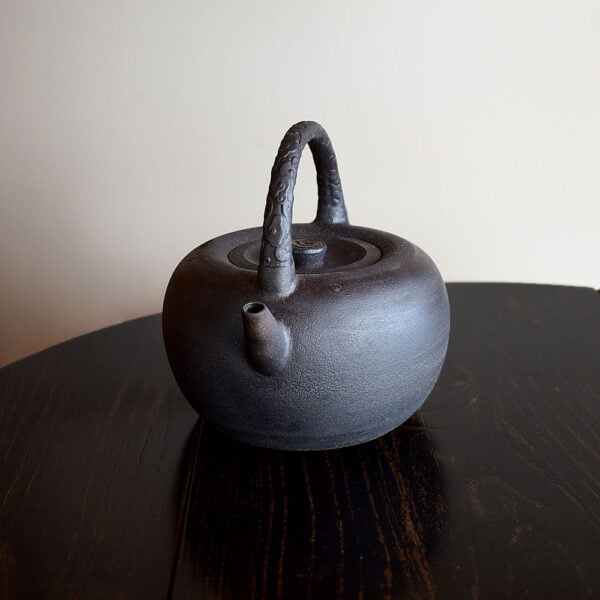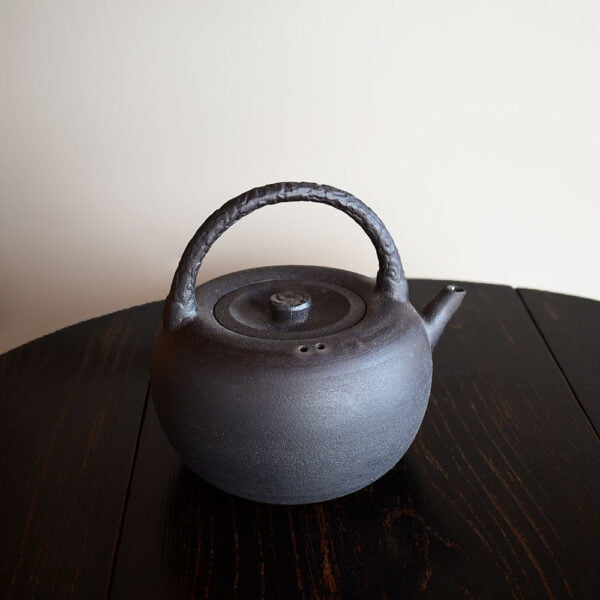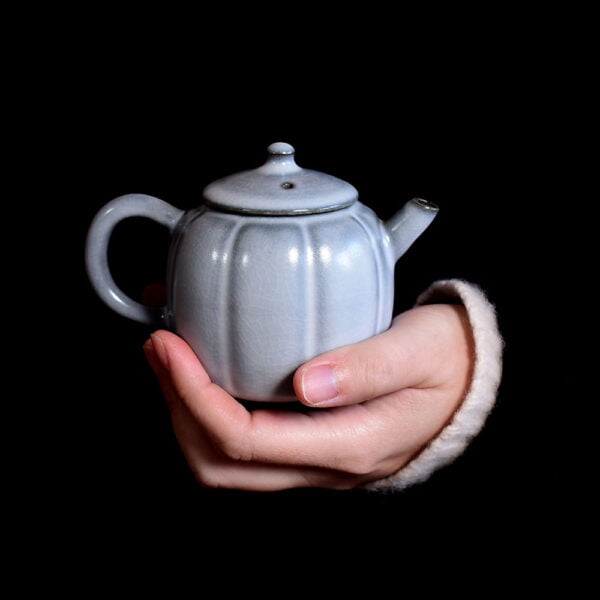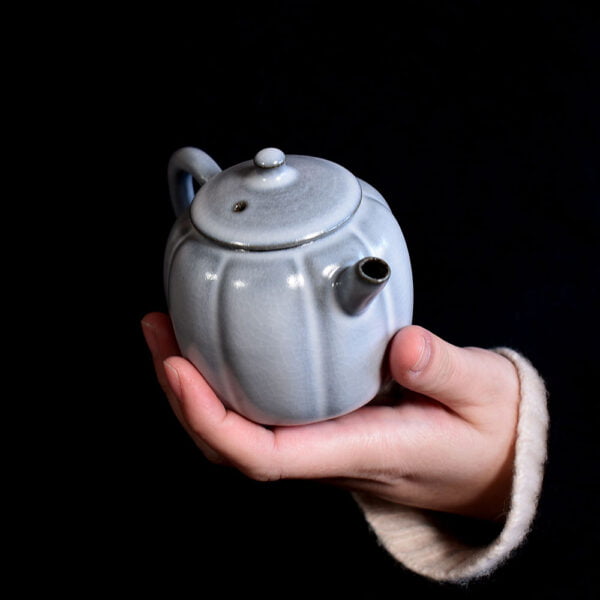Earn points when you:
Mud Tea Pots
- 2 Chinese Tea
Product Filters
Filter by Category
Filter by Pu-erh Type
Filter by Type
Filter by Taste
Filter by Origin
Filter by Caffeine Level
Filter by Leaf Form
Filter by Brand
Filter by Colour
Filter by Material
Filter by Number of Pieces
Filter by Colour
Filter by Size
Filter by Colour
Filter by Material
Filter by Size
Filter by Colour
Filter by Material
Filter by Size
Filter by Colour
Filter by Material
Filter by Origin
2 Products



 $339.99
$339.99This teapot is made with special Lao Yan Mud as the raw material which possesses irreplaceable advantages over other clay materials for teapot making. Lao Yan Mud is formulated by blending rock minerals and clay. The mineral components (such as quartz, mica, etc) in the clay do not melt at temperatures around 1250 degrees Celsius, resulting in the formation of voids during the firing and drying process. These irregular pores, formed due to different shrinkage rates during the final firing, do not fully vitrify. These porous structures contribute to preserving and enhancing the aroma and character of tea, allowing the water to become fragrant and sweet when brewed. This special mud undergoes multiple high-temperature oxidations and reductions, causing its body to exhibit a primitive, natural, and rugged texture. Its colour displays a myriad of kiln-fired variations, exuding a charming and rustic kiln transformation.
In addition, this teapot’s handle is adorned with auspicious cloud patterns. In ancient China, firstly, auspicious clouds symbolize good fortune and positivity. In traditional Chinese culture, auspicious clouds are often depicted surrounding figures of immortals, sages, and auspicious beings, signifying good luck, happiness, and blessings. Secondly, auspicious clouds also represent power and status. In ancient times, the emperor’s outings were often described with imagery like ‘dragon robes, golden belt, purple tassels, and auspicious clouds,’ expressing the emperor’s prestigious position and authority. Thus, auspicious clouds are also regarded as a symbol of power and status. Furthermore, auspicious clouds also embody the notions of mystery and legend. In ancient legends, auspicious clouds were believed to be the mounts of immortals and celestial beings, serving as bridges to the heavens. The emperor’s journeys were often accompanied by an air of mystery and legend. In short, auspicious clouds hold a significant place in traditional Chinese culture, representing auspiciousness, power, mystery, and legend. They are widely prevalent and important motifs and elements in various aspects of Chinese art such as painting, sculpture, architecture, and literature.
The appearance of this teapot is rustic and simple, with lifelike auspicious cloud patterns on the handle, making it a perfect companion for tea brewing.



 $439.99
$439.99This teapot is made with special Lao Yan Mud as the material, both inside and outside covered with soda ash glaze, and semi-handmade. Its elegant shape and smooth water flow make it an excellent companion for tea drinking. The unique cracked glaze technique creates beautiful patterns on the surface as the cracks are formed by the long-term infusion of tea. Generally, the patterns created through the cracked glaze technique are unique, adding more enjoyment to the tea brewing process.
Its special clay material, Lao Yan Mud, possesses irreplaceable advantages over other clay materials for teapot making. Lao Yan Mud is formulated by blending rock minerals and clay. The mineral components (such as quartz, mica, etc) in the clay do not melt at temperatures around 1250 degrees Celsius, resulting in the formation of voids during the firing and drying process. These irregular pores, formed due to different shrinkage rates during the final firing, do not fully vitrify. These porous structures contribute to preserving and enhancing the aroma and character of the tea, allowing the water to become fragrant and sweet when brewed.
Besides the special mud, soda glaze is another main character of this tea pot. The soda glaze is crafted using imported raw minerals from Japan, where, through high-temperature firing, weak alkaline metal ions such as potassium, sodium, and calcium are released and incorporated into the glaze. The surface of the teapot bears tiny pores left behind by the firing process of the natural raw minerals. These breathable pores possess the unique ability to adsorb tea impurities, reduce bitterness, and maintain a refreshing, non-stuffy character, greatly enhancing the quality of the tea infusion. The result is a smoother, more delicate, and pleasantly aromatic tea experience. Upon heating with boiling water, the trace elements like boron, zinc, and lithium, found within the soda glaze, significantly soften the water quality. This effect causes the water molecules to exhibit a weak alkaline state, a characteristic not typically found in ordinary boiling vessels. This outstanding property has earned it the industry nickname – ‘the balance of regulating the body’s acid-alkaline equilibrium.’ Prolonged use of the soda-glazed miniature teapot proves highly beneficial for one’s health.
This teapot has a simple, rustic appearance and smooth water flow. Due to the spongy pores of the Lao Yan mud which makes it can absorb the fragrance of the tea leaves, the aroma of the tea soup can easily maintain for a longer time and taste smoother and sweeter.




